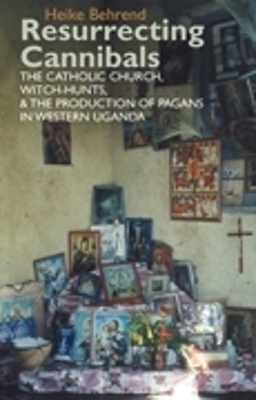Eastern Africa
1 total work
This book explores cannibalism, food, eating and being eaten in its many variations. It deals with people who feel threatened by cannibals, churches who combat cannibals and anthropologists who find themselves suspected of being cannibals. It describes how different African and European images of the cannibal intersected and influenced each other in Tooro, Western Uganda, where the figure of the resurrecting cannibal draws on both pre-Christian ideas andchurch dogma of the bodily resurrection and the ritual of Holy Communion.
In Tooro cannibals are witches: they bewitch people so that they die only to be resurrected and eaten. This is how they were perceived in the 1990s when a lay movement of the Catholic Church, the Uganda Martyrs Guild [UMG] organized witch-hunts to cleanse the country. The UMG was responding to an extended crisis: growing poverty, the retreat and corruption of the local government, a guerrilla war, a high death rate through AIDS, accompanied by an upsurge of occult forces in the form of cannibal witches. By trying to deal, explain and "heal" the situation of "internal terror", the UMG reinforced the perception of the reality of witches and cannibals while at the same time containing violence and regaining power for the Catholic Church in competition for "lost souls" with other Pentecostal churches and movements.
This volumeincludes the DVD of a video film by Armin Linke and Heike Behrend showing a "crusade" to identify and cleanse witches and cannibals organized by the UMG in the rural area of Kyamiaga in 2002. With a heightened awareness and reflective use of the medium, UMG members created a domesticated version of their crusade for Western (and local) consumption as part of a "shared ethnography".
Heike Behrend is Professor of Anthropology and African Studies at the University of Cologne, Germany, the author of Alice Lakwena and the Holy Spirits [James Currey, 1999], and co-editor of Spirit Possession, Modernity and Power in Africa[James Currey, 1999]
In Tooro cannibals are witches: they bewitch people so that they die only to be resurrected and eaten. This is how they were perceived in the 1990s when a lay movement of the Catholic Church, the Uganda Martyrs Guild [UMG] organized witch-hunts to cleanse the country. The UMG was responding to an extended crisis: growing poverty, the retreat and corruption of the local government, a guerrilla war, a high death rate through AIDS, accompanied by an upsurge of occult forces in the form of cannibal witches. By trying to deal, explain and "heal" the situation of "internal terror", the UMG reinforced the perception of the reality of witches and cannibals while at the same time containing violence and regaining power for the Catholic Church in competition for "lost souls" with other Pentecostal churches and movements.
This volumeincludes the DVD of a video film by Armin Linke and Heike Behrend showing a "crusade" to identify and cleanse witches and cannibals organized by the UMG in the rural area of Kyamiaga in 2002. With a heightened awareness and reflective use of the medium, UMG members created a domesticated version of their crusade for Western (and local) consumption as part of a "shared ethnography".
Heike Behrend is Professor of Anthropology and African Studies at the University of Cologne, Germany, the author of Alice Lakwena and the Holy Spirits [James Currey, 1999], and co-editor of Spirit Possession, Modernity and Power in Africa[James Currey, 1999]
